“Plastic extrusion ensures that any excess material can be reused or repurposed, thus embodying sustainability principles in manufacturing. It produces high-quality products that meet stringent durability, safety, and performance standards.”
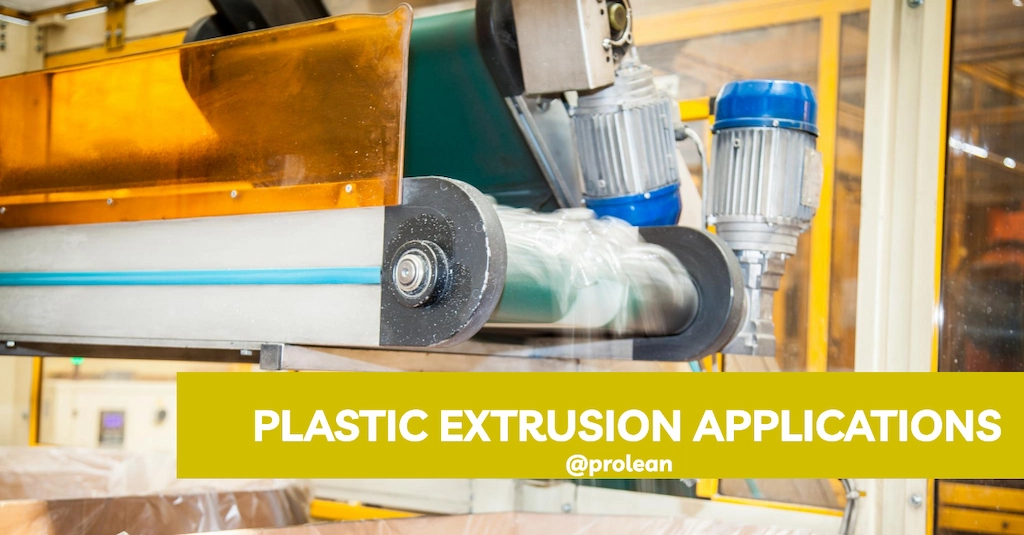
The plastic extrusion seamlessly transforms thermoplastic materials into an expansive array of functional and versatile products. This method involves melting raw plastic and shaping it into continuous profiles. It offers unmatched efficiency and versatility across numerous industries. The beauty of Plastic Extrusion Applications lies in the process’s simplicity and adaptability. As environmental considerations become increasingly paramount, plastic extrusion steps into the spotlight, its capacity to incorporate recycled materials, and its energy-efficient nature. This process minimizes waste by design.
This article will elaborate on the typical applications of plastic extrusion in detail, including tubing, packaging, automotive parts, and more.
What is Plastic Extrusion?
First, What is Plastic Extrusion? It is a high-volume manufacturing process in which raw plastic is melted and formed into a continuous profile. This versatile approach produces a wide range of products with various shapes and sizes, from pipes and tubing to profiles and sheets.
Its efficiency and ability to produce long lengths of product from a single source of material make it a preferred method in numerous industries, including construction, automotive, packaging, and medical devices.
The Plastic Extrusion Process
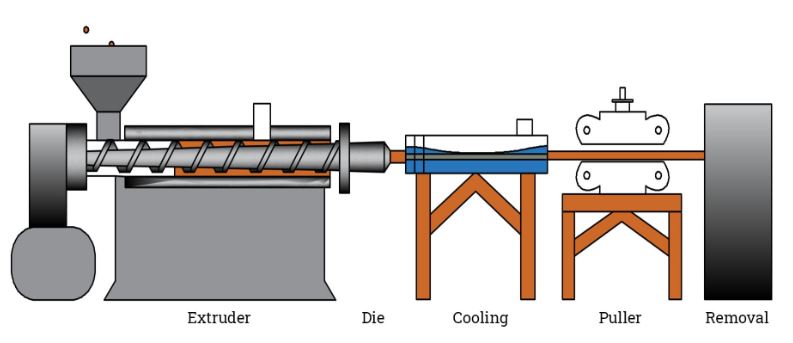
Plastic extrusion setup
Plastic extrusion involves feeding plastic material, usually pellets or granules forms, into an extruder machine. The material is gradually melted by heat and pressure as it is pushed through a screw conveyor. It then passes through a die that shapes it into the desired profile. The extruded plastic is cooled, solidified, and cut or coiled into lengths for further processing or final use.
Table: Steps of the Plastic Extrusion Process
|
Step |
Description |
Importance |
|
Feeding |
Plastic pellets are introduced into the extruder. |
Initiates the extrusion process with raw material. |
|
Melting |
Pellets are heated and melted by friction and external heaters. |
Converts solid pellets into a malleable form. |
|
Shaping |
The molten plastic is forced through a shaped die. |
Determines the final profile of the extruded product. |
|
Cooling |
The extruded profile is solidified through cooling. |
Fixes the product’s shape for further handling. |
|
Cutting/Coiling |
The product is either cut to length or coiled. |
Prepares extruded profiles for distribution or sale. |
Related: What is laser marking on plastic extrusion?
Try Prolean Now!
Tubing and Piping with Plastic Extrusion
Plastic extrusion plays an essential role in the production of tubing and piping, a testament to its versatility and efficiency in manufacturing. This process is particularly well-suited for these applications because it produces continuous lengths of plastic shapes with precise diameters and thicknesses.
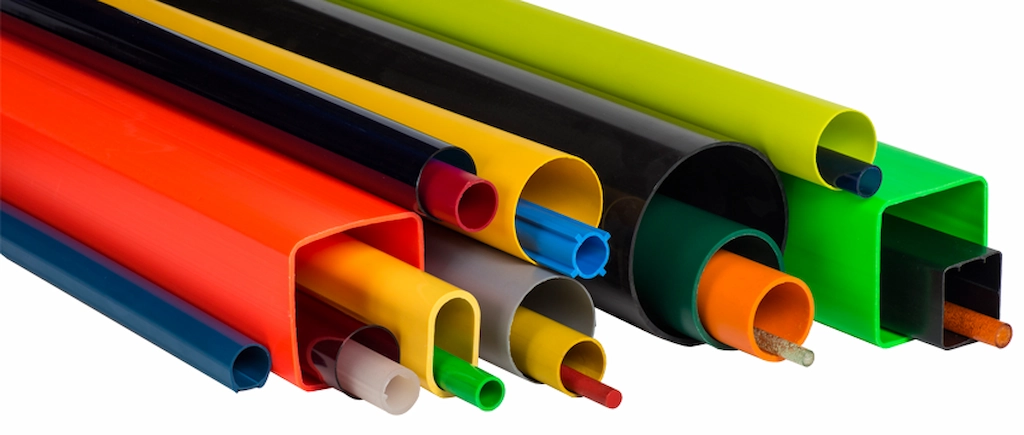
Plastic extrusion for tubing applications
The extrusion of tubing and piping facilitates uniformity and consistency across vast production runs. Moreover, the flexibility in material selection means that specific properties such as flexibility, rigidity, resistance to chemicals, or temperatures can be tailored to the product’s end use, making plastic extruded tubing and piping indispensable in various sectors.
- Water supply pipes
- Medical tubing
- Gas lines
- Electrical conduit
- Sewer lines
- Irrigation systems
- Automotive fuel lines
- Food and beverage tubing
- Chemical transfer hoses
- Pneumatic tubing
- HVAC ductwork
- Flexible hoses
Automotive Applications of Plastic Extrusion
Plastic extrusion enables the production of custom-fit-specific automotive components. The lightweight nature of extruded plastic, combined with their strength and durability, makes them ideal for reducing vehicle weight.
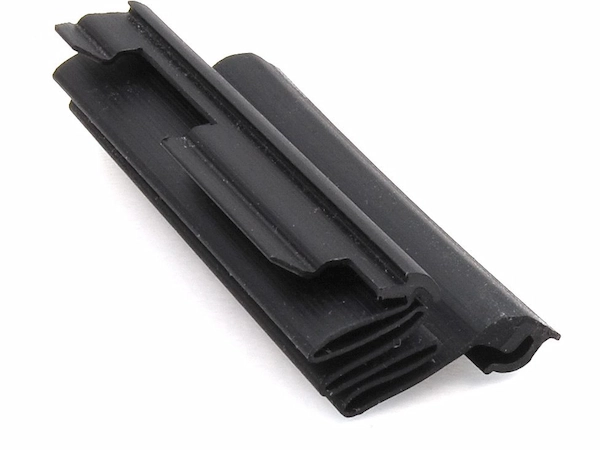
Plastic extruded automotive parts
Furthermore, mixing additives into the plastic before extrusion enhances UV resistance, flexibility, and even conductivity, broadening the scope of applications within the automotive industry. So, plastic extrusion supports the automotive sector’s need for cost-effective, high-volume production while maintaining strict quality standards.
Table: Plastic Extrusion Automotive Applications
|
Application |
Description |
Benefits |
|
Bumper Covers |
Extruded plastic bumpers provide durability and absorb impact. |
Reduces weight, and enhances safety. |
|
Weather Stripping |
Seals for doors and windows, preventing leaks. |
Improves comfort, and reduces noise. |
|
Interior Trims |
Decorative and functional components inside the vehicle. |
Adds aesthetic value, and functionality. |
|
Fluid Handling Tubes |
Used for transporting fluids under the hood. |
Resists chemicals, and withstands pressure. |
|
Wire Harnesses |
Protective coverings for electrical wiring. |
Organizes wires, and protects from damage. |
Windshield Wipers from Plastic Extrusion
Windshield wipers are a critical safety feature in vehicles, ensuring clear visibility during adverse weather conditions. The plastic extrusion process plays a vital role in manufacturing these components. It is particularly essential in creating flexible, durable rubber strips that make direct contact with the glass. The ability to consistently produce these qualities across extensive production runs makes plastic extrusion ideal for windshield wiper manufacturing.
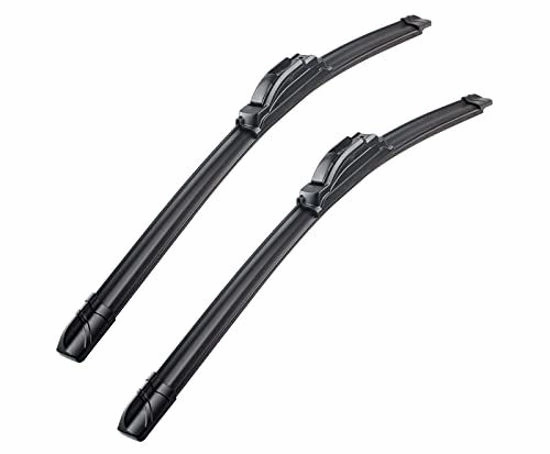
Vehicle windshield
Furthermore, the adaptability of plastic extrusion facilitates the incorporation of various additives into the rubber compound, enhancing the wiper blades’ functionality. For example, UV stabilizers and antioxidants can be added to prolong the life of the wiper blades. Additionally, specific plasticizers ensure the rubber maintains its flexibility over a wide temperature range.
This customization capability ensures that extruded windshield wipers meet the stringent requirements of the automotive industry, delivering reliable performance that drivers can trust. Consequently, plastic extrusion stands as a key manufacturing process in the ongoing effort to enhance vehicle safety and driver comfort.
Try Prolean Now!
Plastic Extrusion for Packaging Products
Plastic extrusion’s suitability for packaging stems from the ability to produce continuous, uniform products with precise dimensions. It is essential for creating various packaging materials. The extrusion process can create films, sheets, and profiles that can be further processed into containers, wraps, and other packaging solutions.
Next, the adaptability of plastic extrusion to incorporate different types of plastics means that packaging with custom-specific needs, such as barrier properties, strength, flexibility, and even biodegradability.
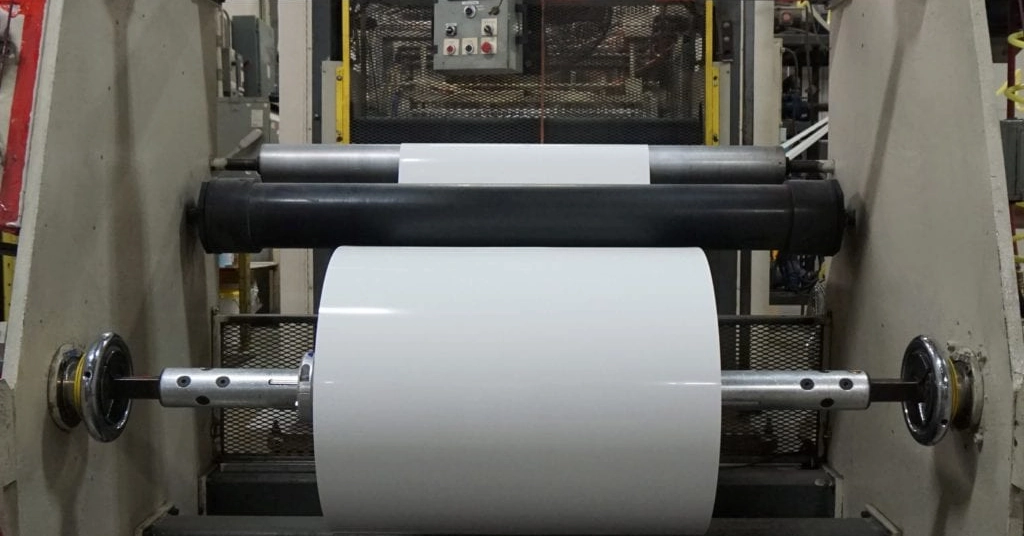
Plastic extrusion for packaging
Additionally, plastic extrusion supports sustainability efforts within the packaging industry. The process efficiently utilizes raw materials, minimizing waste. This emphasis on sustainability is crucial as the industry moves toward more environmentally friendly practices.
Table: Application Examples
|
Application |
Description |
Benefits |
|
Flexible Packaging Films |
Thin plastic layers are used for wrapping food and consumer goods. |
Versatility, barrier properties, recyclable |
|
Rigid Containers |
Boxes, and cases made from thicker plastic sheets. |
Durability, reusability, and strength |
|
Protective Bubble Wrap |
Air-filled bubbles provide cushioning for fragile items during transport. |
Lightweight protection, cost-effective |
|
Shrink Wrap |
Plastic film that shrinks tightly over whatever it covers. |
Secure packaging, tamper evidence |
|
Clamshell Packaging |
Hinged containers that snap close, are often used for retail products. |
Visibility, theft deterrence, resealable |
Plastic Extrusion Applications for Wire and Cables
Plastic extrusion is particularly suited for encapsulating electrical wires and cables due to its ability to produce continuous, uniform coatings. It suits the application of various plastic types, each selected for specific properties such as electrical insulation, flame resistance, and flexibility.
Moreover, the plastic extrusion process supports the integration of additives that enhance the material’s performance, including UV stabilizers, flame retardants, and colorants. This capability is essential for producing wires and cables that meet safety standards and offer extended service life and easy identification during installation.
- Power cables: Insulated for safety and durability.
- Communication cables: Encased to protect data integrity.
- Fiber optic cables: Sheathed for protection against physical and environmental damage.
- Automotive wiring: Customized for resistance to heat and chemicals.
- Underwater cables: Designed for high pressure and moisture resistance.
- Aerospace cables: Lightweight and flame-retardant for safety.
- Medical equipment wires: Biocompatible and easy to sterilize.
- Consumer electronics: Flexible and durable for everyday use.
- Building wiring: Flame-retardant and color-coded for safety and identification.
- Control cables: For machinery and industrial applications.
- Flexible cords: Designed for movable applications requiring durability.
- Coaxial cables: Sheathed for signal integrity and interference reduction.
Plastic Extrusion vs. Plastic Injection Molding
Plastic extrusion and injection molding are different plastic manufacturing processes. Plastic extrusion excels in creating long, continuous profiles, such as tubing, pipes, and sheets. This process is celebrated for its efficiency in high-volume production runs, allowing for the manufacture of products at a relatively low cost.
In contrast, Rapid injection molding is renowned for its precision in producing complex, three-dimensional shapes with tight tolerances. This method is particularly well-suited for creating intricate parts with detailed geometries, such as gears, fasteners, and housing for electronic devices. Injection molding’s ability to fill molds with high levels of detail makes it indispensable for applications requiring dimensional accuracy and surface finish.
Table: Injection Molding Vs Plastic Extrusion Applications
|
Application |
Plastic Extrusion |
Plastic Injection Molding |
|
Pipes and Tubing |
✓ |
|
|
Window Frames |
✓ |
|
|
Insulation Covering |
✓ |
|
|
Food Containers |
✓ |
|
|
Automotive Dashboards |
✓ |
|
|
Medical Devices |
✓ |
✓ |
|
Electronic Housings |
✓ |
|
|
Plastic Bags |
✓ |
|
|
Toys |
✓ |
|
|
Outdoor Furniture |
✓ |
✓ |
Plastic Extrusion vs. Plastic CNC Machining
Extrusion’s strength lies in its ability to produce parts with consistent cross-sectional shapes, making it ideal for applications requiring lengths of material. On the other hand, CNC machining offers unparalleled precision in creating complex parts from solid plastic blocks or sheets. It is highly valued for its flexibility in design and the ability to produce intricate details with tight tolerances. Additionally, plastic CNC machining is the go-to choice for low to medium-volume production where complexity, precision, and a smooth finish are critical.
Table: Plastic CNC Machining vs Extrusion Applications
|
Application |
Plastic Extrusion |
Plastic CNC Machining |
|
Custom Profiles |
✓ |
|
|
Detailed Components |
✓ |
|
|
Prototypes |
✓ |
|
|
Large Panels |
✓ |
|
|
Gears and Precision Parts |
✓ |
|
|
Signage |
✓ |
✓ |
|
Structural Components |
✓ |
|
|
High-Precision Tools |
✓ |
Try Prolean Now!
Order your Plastic Extrusion and Injection Molding Parts at ProleanTech
At ProleanTech, we specialize in providing top-tier plastic extrusion and injection molding services tailored to meet your unique requirements. Our extrusion process ensures that each part meets your exact specifications, delivering unmatched quality and efficiency. From simple profiles to complex shapes, we have the technology and expertise to bring your designs to life.
Our injection molding services stand out for their precision and cost-efficiency, making ProleanTech the ideal partner for your manufacturing needs. Whether you’re producing intricate components or large volumes of parts, our state-of-the-art machinery and skilled team guarantee high-quality results every time. Let us help you achieve the precision your project demands.
Getting started with ProleanTech is easy. Upload your design and request a quote through our user-friendly platform. Our responsive team is ready to guide you through the process, ensuring a seamless experience from design submission to final delivery.
Read more:
- Differences Between Metal and Plastic in CNC Machining
- CNC Machining Vs Injection Molding: What are the Differences?
- Custom Aluminum Extrusion Manufacturer in China for Your Project
- Top 10 Plastic Extrusion Companies You Should Know
Summing Up
Plastic extrusion has cemented its position as an essential process in modern manufacturing, merging innovation with sustainability. Its adaptability is unmatched, allowing for complex shapes and products with minimal waste, underscoring its economic benefits. Therefore, Plastic Extrusion Applications provide cost efficiency and play a significant role in advancing environmental responsibility.
FAQs
What is plastic extrusion?
Plastic extrusion is a manufacturing process that melts raw plastic and extrudes it through a die to form continuous profiles of various shapes and sizes, ranging from pipes to sheets.
w does plastic extrusion contribute to sustainability?
It promotes recycled materials, reduces waste by reusing excess plastic, and optimizes energy consumption during production, aligning with eco-friendly manufacturing practices.
What are the most common products made through plastic extrusion?
It includes piping, tubing, window frames, insulation for electrical wires, and flexible packaging materials, showcasing the process’s versatility.
Can plastic extrusion use recycled materials?
Yes, plastic extrusion can incorporate recycled plastics, significantly reducing the environmental footprint of the manufacturing process and supporting circular economy principles.
What innovations are currently shaping plastic extrusion technologies?
Innovations include the development of biodegradable plastics, precision extrusion techniques for complex profiles, and advanced materials that can change properties in response to environmental stimuli.
How does the automotive industry benefit from plastic extrusion?
The automotive industry benefits through lightweight components that reduce vehicle weight, improve fuel efficiency, and lower emissions, alongside versatile applications in interiors, exteriors, and under-the-hood parts.
Resource
Raju, G., Sharma. (2014). Recent methods for optimization of plastic extrusion process: A literature review. International Journal of Advanced Mechanical Engineering, 4(6), 583-588. Retrieved from http://www.ripublication.com

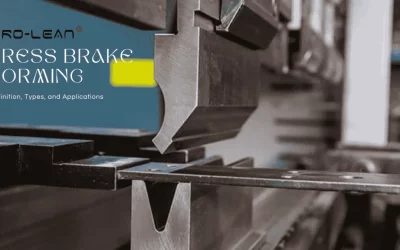
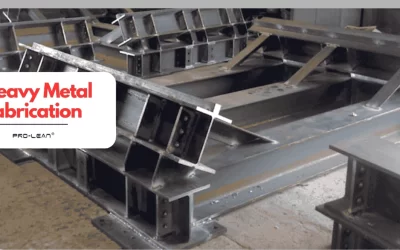
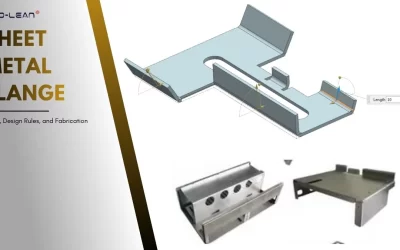
Thumbs up for Windshield Wipers Plastic Extrusion Topic. Really good points
Thank you for your words!